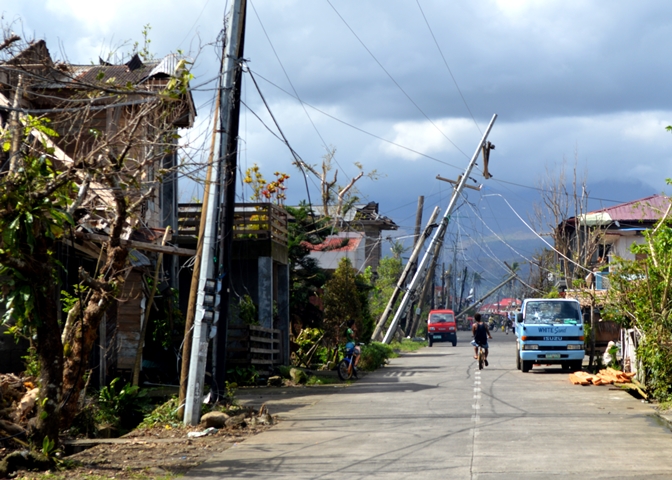Focus on: How Irish Aid responds to emergencies
Typhoon Haiyan hit the Philippines in November 2013. Irish Aid quickly got to work....

Ireland was one of the first countries to respond in the aftermath of Typhoon Haiyan, which made landfall across the Philippines on 8th November 2013.
Response to the disaster was through four primary mechanisms:
- Pre-positioned funding drawn on by the UN, International Federation of the Red Cross and Red Crescent Societies, and NGO partners;
- Four separate airlifts to dispatch essential non-food relief items, e.g. shelter and water equipment;
- Immediate deployment of five Rapid Response Corps members to UN agencies;
- Direct funding of €2.675 million channelled through NGO partners (Christian Aid, Goal, Oxfam, Médecins Sans Frontières, Plan Ireland, Trócaire and World Vision) for interventions in health, shelter, food and water services, and protection of women and children.
Following the immediate rescue phase, the Tánaiste Eamon Gilmore and the Minister for Trade and Development Joe Costello requested the deployment of a Technical Team to affected areas to assess priority needs for the recovery and transition phase, and to make recommendations to inform Ireland’s medium-term response to the disaster.
The team’s mission was conducted over six working days. During site visits to Tacloban City and Leyte Province they interviewed beneficiaries and local responders and witnessed firsthand how Ireland’s contribution had assisted the most affected communities in the typhoon’s immediate aftermath.
Key recommendations of the mission were:
- In view of the enormous scale of this disaster Ireland should make a meaningful contribution to the disaster response efforts in the Philippines for at least a period of 12 to 18 months.
- Recovery assistance should be directed at reinforcing the Government of Philippines leadership in overseeing the recovery plan, strengthening the capacity of local government and communities and flexibly responding to emerging needs.
- Support should be channelled to a limited number of key operational partners with a demonstrated capacity to respond. Support should focus on a limited number of key sectors in which needs have clearly been identified. This will avoid spreading resources too thinly, thus diluting impact, while also facilitating more effective monitoring and follow-up.
Based on these recommendations, Ireland will continue to make a meaningful contribution to the ongoing disaster response efforts in the Philippines for some time to come.